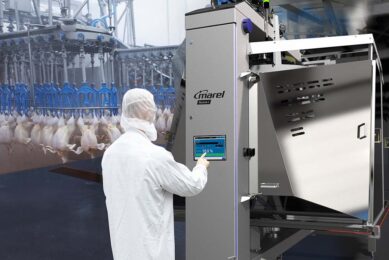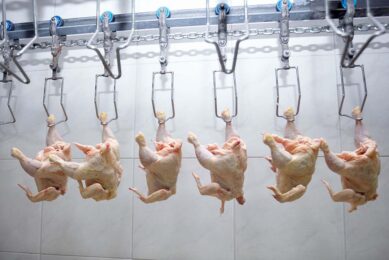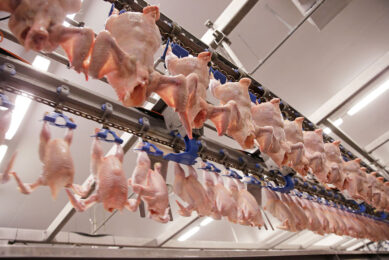How focus on energy use can cut costs

The cost of heating and powering poultry houses is a significant expense for producers. It’s also a cost that farmers have a great deal of control over. FEC Energy’s Jon Swain offers the latest tips for minimising bills.
The energy market can be incredibly volatile and reacts to short and long-term influences that can lead to uncertain energy prices for farmers. And the past 12 months have been no different – the wholesale price of power (charged to energy suppliers by the generators) has seen lows of £42.5/MWh and highs of £48.5/MWh for 12 months ahead purchasing. This is a 12% swing which suppliers will be sure to pass on to consumers.
So is it better to fix long term or play the market?
This is an interesting question and the answer will largely depend on the consumers’ attitude to risk and the state of the market. The best time to fix your electricity costs will be at the bottom of the market – but not many of us can predict that! In a falling market fixing long term will mean higher prices for the short-term but many gamble that general market trends mean long term contracts will deliver savings in the end.
Interestingly, on average, the short-term market tends to give a long term average price that’s better than a long term fixed deal. The reason for this is that the short-term market player is not paying the risk premium for a long term deal offer. So, although it may be a bumpy ride, it can be lower cost in the end.
While it may be beneficial to play the short-term market, these deals make long term budgeting unpredictable and users will face increased hassle in renewing contracts regularly. This can be an issue for many, certainty of costs is important when selling produce into a low margin fixed price marketplace.
Renewable energyRenewable energy systems have been widely adopted by the poultry industry through the uptake of Renewable Heat Incentive (RHI). This pays owners and operators of accredited renewable systems such as biomass boilers and heat pumps a tariff for the use of the heat. This tariff is set to provide a return on investment against significantly higher capital costs of renewable systems and also to help stimulate the popularity of non-fossil fuel heating. The RHI has undergone several impacting changes since 2011, the rates payable for biomass systems have fallen significantly in line with uptake and installing a biomass boiler now requires good project establishment and an inexpensive fuel source. By contrast heat pumps, both in the poultry industry and beyond, have not had the popularity that the government expected and therefore rates remain high and good returns can be made. One major advantage of indirect heating sources such as fan coils from biomass or heat pumps, is that bird welfare is improved because litter is kept drier and the heat is more gently applied. |
Energy efficiency in the poultry house
One of the best ways of keeping control of energy costs is to reduce the amount that is used. We have seen many poultry producers take advantage of renewable energy systems in the last few years but keeping an eye on energy efficiency is still important.
One principle to bear in mind here is that very often good energy efficiency and good practice go hand in hand to improve bird and building performance.
Energy efficiency improvements are often very site specific and a function of building age, installed equipment, type of control and the growers’ operation and maintenance regimes. However there are some general rules/areas that can be followed to ensure good energy efficiency:
- Insulation – the more insulation the better, specifically the insulation surrounding the building fabric and any pipework transmitting hot or cold water. Old and wet insulation is ineffective and standards of insulation thickness and modern products will deliver good cost savings
- Air leakage and ventilation – whilst all poultry buildings require ventilation to keep a good environment, this ventilation should be controlled. Incidental air leakage through poorly fitting doors and windows or gaps in walls will increase energy consumption. While on the subject of ventilation – pay attention to fans which often have long run times and use large quantities of power. Fans should be fitted with high efficiency motors, whilst blades and apertures should be kept clean and clear from obstructions.
- Lighting – LED lights are rapidly becoming the industry standard. At the very least compact fluorescent lamps of discharge lamps such as high pressure sodium of metal halide fittings should be used. Lights should be controlled to requirement, time switches or dawn to dusk control that ensure lights are switched off when not needed are essential.
- Good building control and measurement – Today’s building control systems are more sophisticated and more available to the farmer/grower than ever before. They can provide levels of detail and historic data that offers an intimate view of the conditions inside buildings. Using this information to tune set points on heating and ventilation systems are what makes the savings. Monitoring and benchmarking between buildings and sites can quickly highlight which are underperforming as a starting point for alterations.
- Heat recovery – these have fallen out of popularity with the advent of biomass boilers and heat pumps. These systems work by pre-warming incoming air with outgoing warm moist air to both reduce energy consumption and to improve litter and internal conditions. Heat recovery units can be used to reduce the energy consumption of any building regardless of heating system and can often be fitted with system heating coils to deliver heat as well.
Join 31,000+ subscribers
Subscribe to our newsletter to stay updated about all the need-to-know content in the poultry sector, three times a week. Beheer
Beheer








 WP Admin
WP Admin  Bewerk bericht
Bewerk bericht